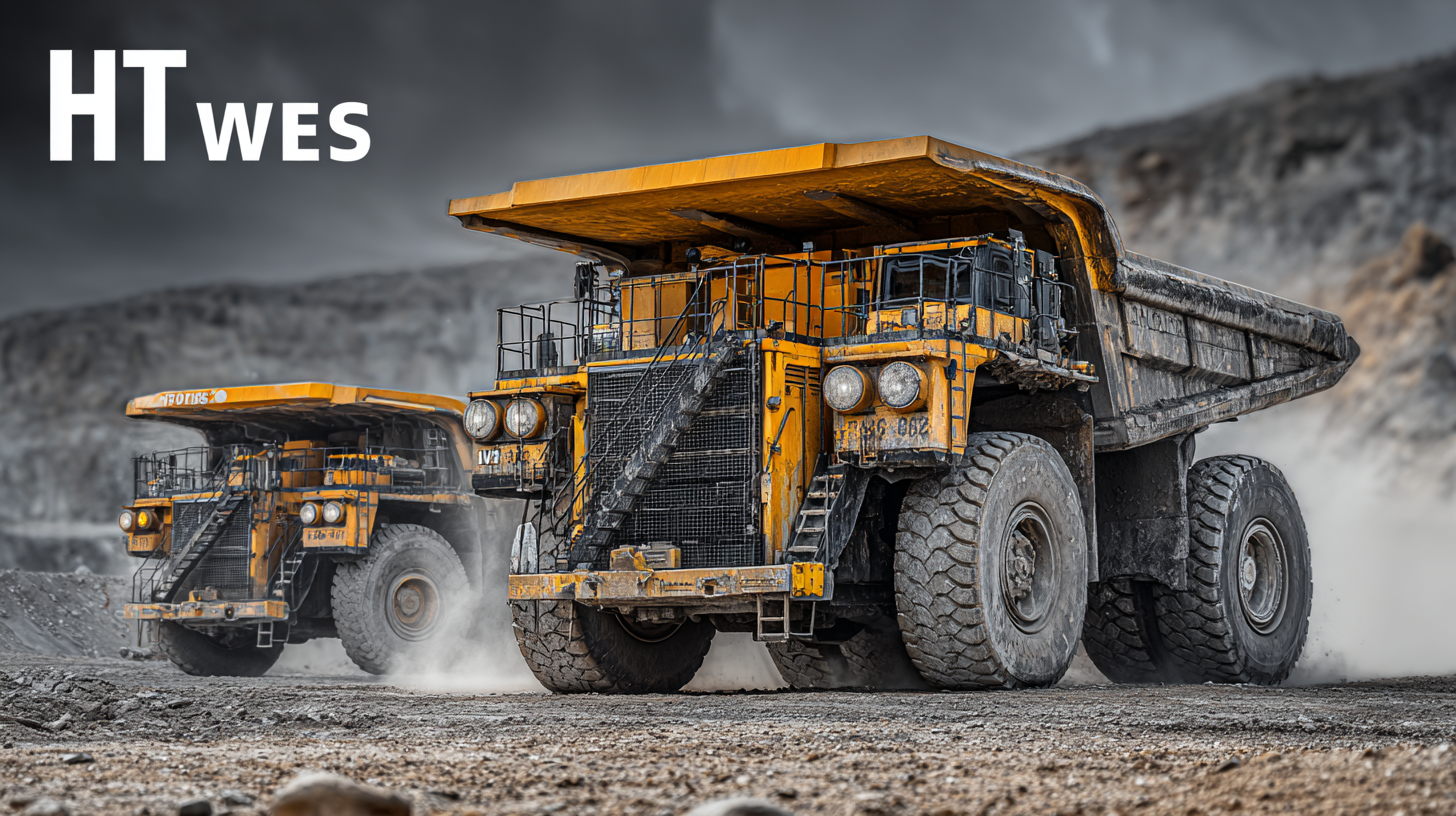The rapid advancement of technology in the mining sector has positioned China at the forefront of developing Autonomous Mining Trucks, transforming the industry's operational efficiencies. According to a report by Grand View Research, the global autonomous mining equipment market is anticipated to reach USD 5.4 billion by 2025, highlighting a significant shift towards automation in mining operations. The benefits of implementing such vehicles include enhanced safety measures, reduced operational costs, and increased productivity—elements critical for mining companies aiming to optimize their processes while adhering to stringent environmental standards. Furthermore, as the demand for minerals surges driven by renewable energy and digital technologies, China’s investments in advanced autonomous truck systems are setting new benchmarks for global markets, leading the way in a sector poised for disruption and growth.

As the demand for minerals crucial to the energy transition continues to rise, the global market for autonomous mining trucks is gaining momentum. By 2032, investments in technology that enhances operational efficiency and sustainability will be paramount for mining companies. Key among these technological advancements is the development of LiDAR sensors, which play a critical role in the evolution of autonomous vehicles. These sensors improve the precision and safety of mining operations, enabling companies to utilize autonomous trucks that can navigate complex terrains while minimizing operational hazards.
Moreover, the broader landscape of mining technologies is undergoing significant transformation, as the industry seeks to embrace eco-friendly practices. The market for AI-powered mining equipment is projected to grow substantially, driven by the increasing need for metals, such as copper, lithium, and cobalt, essential for electric vehicle batteries. This convergence of sustainability efforts and technological innovation positions the autonomous mining truck sector not only as a key player in the mining industry's future growth but also as a catalyst for responsible resource extraction. With opportunities for investment emerging now, stakeholders in the mining sector are encouraged to explore these advancements to thrive in a rapidly evolving market.
The chart below illustrates the projected growth in demand for autonomous mining trucks over the next five years across various regions. The increasing focus on efficiency and safety in mining operations is driving this trend.
China has emerged as a pioneer in the development of advanced autonomous mining trucks, showcasing a range of key technological advancements that enhance operational efficiency and safety in mining operations. One significant innovation is the integration of artificial intelligence (AI) and machine learning algorithms, enabling these trucks to optimize their routes and adapt to varying geological conditions in real time. This adaptability not only minimizes operational costs but also significantly reduces the risk of human error, enhancing overall productivity.
Another major advancement is the implementation of advanced sensor technologies, including LiDAR, radar, and high-definition cameras. These sensors allow autonomous mining trucks to navigate complex terrains while detecting obstacles and ensuring safe distances from workers and equipment. Furthermore, the incorporation of 5G connectivity facilitates seamless communication between trucks and control centers, enabling remote monitoring and management of fleets over vast mining sites. With these technological strides, China is setting new standards in the autonomous mining sector, positioning itself as a leader in the global market.

The adoption of autonomous mining trucks is gaining momentum on a global scale, yet several challenges loom large in this transition. One significant hurdle is the high initial investment required for technology implementation. Mining companies must allocate substantial budgets not only for the trucks themselves but also for the necessary infrastructure, software, and training for personnel. This financial barrier can deter smaller operations from taking the plunge into automation.

Tip: To ease the transition, companies should consider phased implementation. Start with a pilot program to assess the technology’s benefits and shortcomings before a full rollout. This approach can mitigate risks and provide valuable insights.
Another challenge is the need for reliable communication networks in often remote and rugged mining environments. Autonomous trucks depend on seamless data transmission to operate efficiently. Any disruption in connectivity can lead to operational delays or safety risks. Thus, investing in robust communication infrastructure is essential to support these advanced vehicles.
Tip: Engage with technology partners early in the planning process to design a tailored communication solution. This collaboration can ensure that all potential obstacles are addressed before deployment.
China has emerged as a global leader in the autonomous mining truck industry, leveraging its advanced technology and robust manufacturing capabilities. The nation’s competitive edge is rooted in a combination of comprehensive government support and significant investment in research and development. With a focus on innovation, Chinese companies are continuously improving the efficiency and safety of autonomous systems, allowing for seamless integration into existing mining operations. This rapid technological advancement positions China at the forefront of the mining sector, setting new standards for automation worldwide.
Moreover, China's vast network of resources and talent offers a distinctive advantage in scaling production. The country's established supply chain for components, along with a highly skilled workforce, ensures quick turnaround times and cost-effectiveness for autonomous mining trucks. As global demand for automation increases, China is poised to meet these needs by exporting its advanced solutions to international markets. This combination of strategic investment, innovation, and resource management not only strengthens China's dominance in the autonomous mining truck arena but also enhances its reputation as a key player in the broader global mining industry.
The global landscape for autonomous mining solutions is undergoing a profound transformation, particularly as China emerges as a leader in upgrading the quality of autonomous mining trucks tailored for the global market. With the heavy-duty truck market projected to reach a staggering $300 billion in 2024 and to expand further to $460 billion by 2033, the anticipation of a compound annual growth rate of 4.9% highlights the pivotal role autonomous technologies will play in shaping this sector. As companies refocus their strategies to harness cutting-edge technology, the integration of automation into mining operations promises not only enhanced efficiency but also significant cost savings.
As the mining and metals industry navigates critical shifts in energy transition and geopolitical dynamics, the demand for intelligent mining solutions continues to surge. The autonomous mining market is expected to skyrocket from $150 million in 2024 to $131 billion by 2033, representing an extraordinary CAGR of 93%. This rapid growth is driven by innovations in intelligent excavation and transport systems that leverage automation and smart technologies. With sustainability becoming a core requirement, the future of mining looks poised for an evolution that aligns economic growth with ecological considerations, fundamentally redefining operational paradigms in the years to come.
| Feature | Specification | Global Impact | Market Trends |
|---|---|---|---|
| Payload Capacity | 150 tons | Increased efficiency in mining operations | Growing adoption of automation in mining |
| Operational Range | Up to 20 km | Reduced transportation costs | Integration of IoT in logistics |
| Autonomy Level | Full autonomy | Enhanced safety for operators | Trend towards zero-emission vehicles |
| Technological Integration | AI and Machine Learning | Data-driven decision making | Enhanced predictive maintenance |
| Market Growth Rate | 15% CAGR | Expansion of mining operations | Increased investment in smart mining technologies |